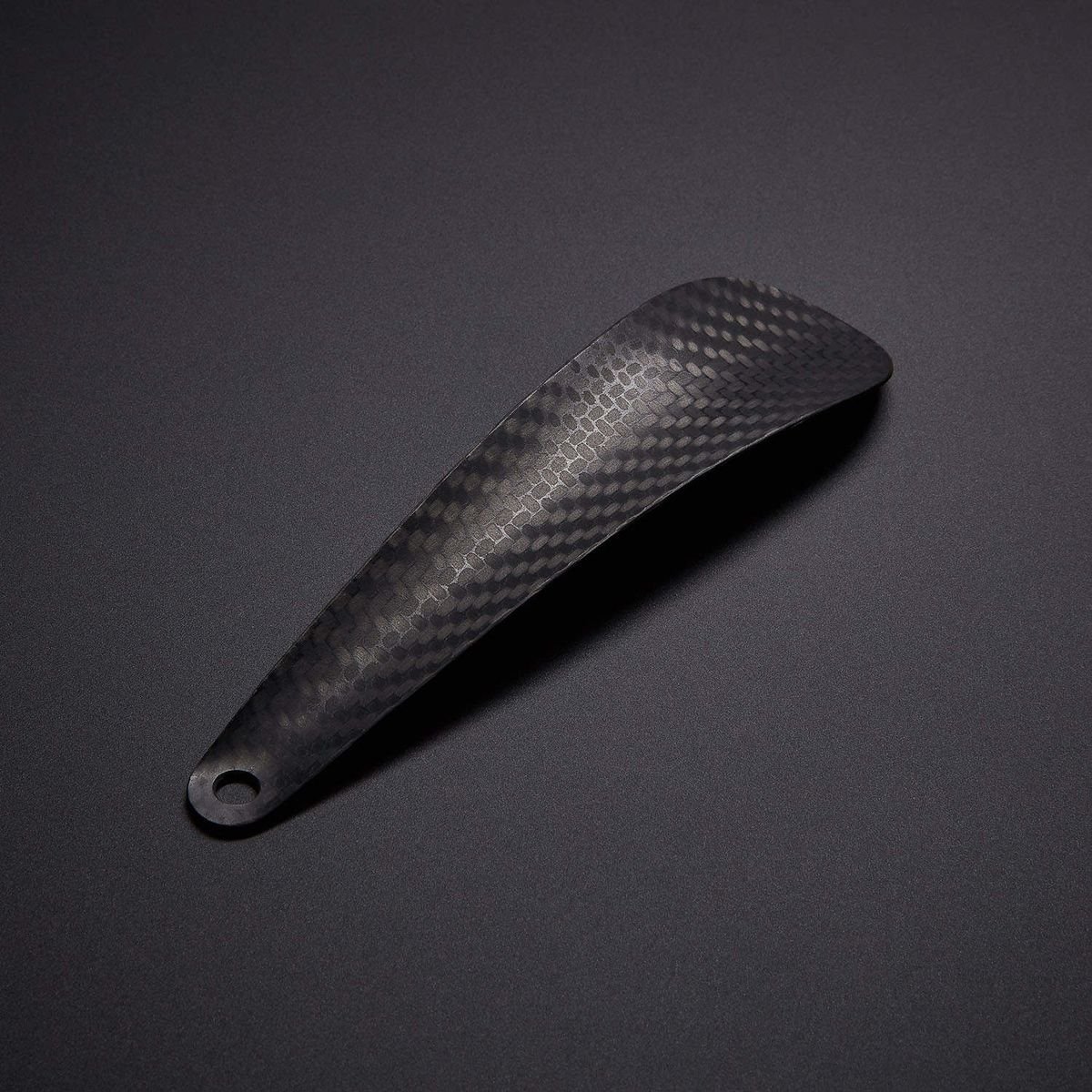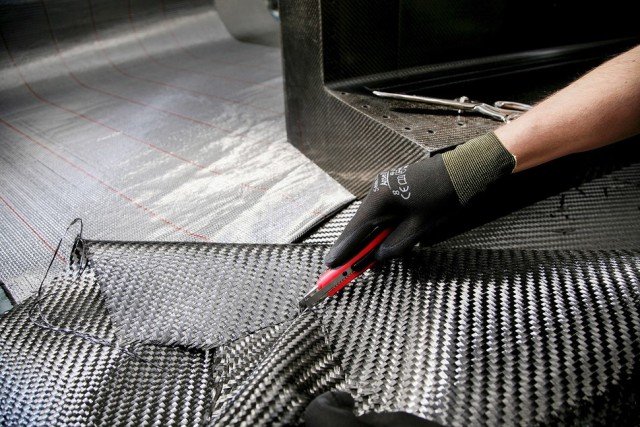
Výběr správné fólie z uhlíkových vláken může pro váš projekt změnit pravidla hry. Ať už stavíte automobil na zakázku, vytváříte letecké komponenty nebo jen vytváříte lehkou, ale pevnou konstrukci, karbonová vlákna nabízejí bezkonkurenční poměr pevnosti a hmotnosti, odolnost a všestrannost. Jak ale při tolika dostupných typech desek z uhlíkových vláken zjistit, která z nich vyhovuje vašim konkrétním potřebám? Tento průvodce vám rozebere vše, co potřebujete vědět, abyste si mohli bez obav vybrat dokonalý materiál pro svůj projekt.

Proč si vybrat listy z uhlíkových vláken?
Desky z uhlíkových vláken jsou často používaným materiálem pro projekty, u nichž záleží na pevnosti, lehkosti a pružnosti. Představte si, že pracujete na dílu, který musí vydržet obrovský tlak, aniž by příliš přitížil. Desky z uhlíkových vláken jsou pro to ideální. Nejenže poskytují vynikající pevnost, ale mají také vysokou odolnost proti únavě a opotřebení, takže jsou ideální pro aplikace v automobilovém, leteckém a dokonce i sportovním vybavení. Výběr desek z uhlíkových vláken není jen o jejich fyzikálních vlastnostech, ale také o jejich všestrannosti. Ať už vám jde o elegantní povrchovou úpravu nebo o materiál, který lze snadno tvarovat do složitých tvarů, uhlíková vlákna mohou splnit vaše požadavky.

Typy listů z uhlíkových vláken
Při výběru plechů z uhlíkových vláken je důležité znát různé typy, které jsou k dispozici. Uhlíková vlákna se vyrábějí v několika variantách, z nichž každá má jedinečné vlastnosti vhodné pro různé aplikace. Zde jsou uvedeny nejběžnější typy:
1. Uhlíkové vlákno v plátnové vazbě
Tento typ plechu je tkaný v tradičním křížovém vzoru, který vytváří vyvážený, jednolitý povrch. Je to jedna z nejoblíbenějších voleb pro projekty vyžadující hladký, vizuálně přitažlivý povrch. Hladká vazba je ideální pro konstrukční aplikace, včetně automobilových dílů a sportovního vybavení.
2. Twill Weave Carbon Fiber
Uhlíkové vlákno s keprovou vazbou má diagonální vzor, který dodává výrazný estetický vzhled a oproti hladké vazbě poskytuje lepší pružnost. Díky pružné struktuře je vhodné pro díly, které se musí obtáčet kolem křivek nebo vytvářet složité tvary.

3. Jednosměrná uhlíková vlákna
Jednosměrné desky z uhlíkových vláken jsou určeny pro vysokopevnostní aplikace, které vyžadují maximální výkon podél jedné osy. Tyto listy jsou uspořádány v jediném směru a poskytují výjimečnou pevnost v tahu a tuhost v tomto směru. Jsou ideální pro aplikace, jako jsou křídla letadel a výkonné automobilové díly.
4. 3K, 6K a 12K karbonová vlákna
Tato čísla udávají počet uhlíkových vláken spojených do jednoho vlákna. List 3K je vyroben ze svazků 3 000 vláken, 6K z 6 000 a 12K z 12 000 vláken. Čím vyšší číslo, tím více uhlíkových vláken je v každém vlákně, což vede k větší pevnosti a odolnosti, ale také k větší tuhosti.
5. Prepreg Carbon Fiber
Prepregové desky jsou předem impregnovány pryskyřicí, takže je lze snadno použít bez nutnosti použití další pryskyřice během procesu vrstvení. Často se používají ve vysoce výkonných aplikacích, jako je letecký průmysl a motoristický sport, díky své vynikající konzistenci a vynikajícím mechanickým vlastnostem.

Výhody listů z uhlíkových vláken
Desky z uhlíkových vláken mají několik výhod, které z nich činí oblíbený materiál pro mnoho průmyslových odvětví. Zde jsou důvody, proč vynikají:
1. Výjimečný poměr pevnosti k hmotnosti
Jedním z největších lákadel uhlíkových vláken je jejich působivý poměr pevnosti a hmotnosti. U projektů, kde je důležité snížit hmotnost, ale stále potřebujete pevnost, jsou desky z uhlíkových vláken vhodné. Můžete použít tenčí listy při zachování odolnosti, což vede k výrazné úspoře hmotnosti bez snížení výkonu.
2. Vysoká trvanlivost a odolnost proti únavě
Uhlíková vlákna jsou vysoce odolná proti opotřebení, a proto jsou vynikající volbou pro komponenty, které jsou opakovaně namáhány. To je užitečné zejména v aplikacích, jako je automobilový nebo letecký průmysl, kde jsou díly vystaveny neustálému pohybu a nárazům.

3. Odolnost proti korozi
Na rozdíl od kovů, které mohou časem korodovat, uhlíková vlákna nerezaví. To z něj činí ideální volbu pro námořní aplikace nebo venkovní projekty vystavené drsným podmínkám prostředí.
4. Tepelná stabilita
Uhlíková vlákna se dobře chovají při vysokých i nízkých teplotách a zachovávají si své vlastnosti i v extrémních podmínkách. Tato tepelná stabilita je obzvláště výhodná pro aplikace v leteckém průmyslu a vysoce výkonných automobilech.
5. Estetická přitažlivost
Kromě výkonu poskytují karbonové desky také elegantní a moderní vzhled. Typické tkané vzory dodávají konečnému výrobku vizuální přitažlivost, a proto jsou velmi oblíbené u špičkových spotřebních výrobků, od gadgetů až po luxusní automobily.
Budoucnost plechů z uhlíkových vláken
Budoucnost uhlíkových vláken vypadá zářivě, protože pokrok stále posouvá hranice možností tohoto materiálu. Výzkum a vývoj se zaměřují na zdokonalování výrobních technik, aby se snížily náklady, čímž se uhlíková vlákna stávají dostupnější pro širší škálu průmyslových odvětví. Navíc se zdokonalují metody recyklace, což přispěje k tomu, že tento materiál bude z dlouhodobého hlediska udržitelnější.
V budoucnosti se uhlíková vlákna pravděpodobně stanou klíčovým prvkem při konstrukci lehčích a úspornějších vozidel, včetně elektromobilů a létajících automobilů. Kromě toho mohou inovace v aditivní výrobě (3D tisk) otevřít ještě více možností využití uhlíkových vláken v zakázkových, vysoce výkonných dílech.

Jak vybrat správný list z uhlíkových vláken
Výběr správného plechu z uhlíkových vláken není univerzální. Zde je několik klíčových faktorů, které je třeba zvážit:
1. Požadavky na projekt
Než se pustíte do výběru materiálu, jasně definujte potřeby svého projektu. Potřebujete, aby byl plech lehký? Vysoce odolný? Pružný? Znalost vašich požadavků vám pomůže zúžit výběr.
2. Nosnost
Uvědomte si, jak velkou hmotnost nebo zatížení bude muset list z uhlíkových vláken vydržet. Například jednosměrné listy nabízejí vysokou pevnost v jednom směru, zatímco tkané listy poskytují vyváženou pevnost ve více směrech.
3. Tvar a flexibilita
Některé projekty vyžadují díly, které je třeba tvarovat nebo lisovat, zatímco jiné vyžadují tuhost. Pokud je rozhodující pružnost, zvažte keprovou vazbu nebo prepregové desky.
4. Estetické aspekty
Pokud váš projekt vyžaduje leštěný, profesionální povrch, zvažte volbu fólie z uhlíkových vláken s hladkou vazbou nebo keprovou vazbou pro poutavý design.
5. Náklady a dostupnost
Listy z uhlíkových vláken mohou být drahé. Výkon je sice zásadní, ale je nutné vyvážit kvalitu s rozpočtovými omezeními. Špičkové možnosti, jako jsou prepregové desky, budou dražší, ale mohou být nezbytné pro specifické aplikace.
6. Podmínky prostředí
Bude váš projekt vystaven povětrnostním vlivům? Uhlíková vlákna jsou vhodná pro venkovní použití, protože odolávají korozi. Pokud však bude váš projekt vystaven extrémním teplotám, nezapomeňte si vybrat takový plech z uhlíkových vláken, který těmto podmínkám odolá.
Výhody používání listů z uhlíkových vláken spolu s dalšími produkty z uhlíkových vláken
Listy z uhlíkových vláken fungují neuvěřitelně dobře ve spojení s dalšími výrobky z uhlíkových vláken, což zvyšuje celkový výkon vašeho projektu. Zde je několik způsobů, jak může integrace více komponent z uhlíkových vláken pomoci:
1. Vylepšená strukturální integrita
Kombinace desek z uhlíkových vláken s tyčemi nebo trubkami z uhlíkových vláken zvyšuje pevnost celé konstrukce. Běžně se s tím setkáváme v leteckém průmyslu a motoristickém sportu, kde je požadována maximální pevnost bez zvýšení hmotnosti.
2. Zvýšená odolnost
Ve spojení s uhlíkovými kompozity nebo lamináty mohou desky z uhlíkových vláken zajistit ještě větší odolnost. Tato kombinace se často používá u vysoce výkonných zařízení, kde je důležitá jak dlouhá životnost, tak nízká hmotnost.
3. Bezproblémová estetika
U projektů, kde záleží na estetice, vytváří použití různých výrobků z uhlíkových vláken dohromady celistvý vzhled a zajišťuje, že všechny díly splynou v jednotný design.
4. Přizpůsobitelnost
Kombinace různých výrobků z uhlíkových vláken nabízí větší flexibilitu při navrhování. Například použití desek z uhlíkových vláken pro ploché díly a trubek nebo tyčí z uhlíkových vláken pro konstrukční podporu umožňuje kreativní řešení, která jsou pevná a zároveň lehká.
Výběr správného plechu z uhlíkových vláken pro váš projekt spočívá v pochopení vašich specifických potřeb a jejich sladění se správným materiálem. Ať už hledáte pevnost, pružnost, odolnost nebo estetický vzhled, uhlíková vlákna nabízejí řadu řešení. Zvážíte-li různé typy desek z uhlíkových vláken, jejich výhody a způsob, jakým spolupracují s dalšími výrobky z uhlíkových vláken, budete vybaveni pro informované rozhodnutí, které zajistí úspěch vašeho projektu.
Tak neváhejte, uvolněte potenciál uhlíkových vláken a posuňte svůj projekt do nových výšin!

Jedna reakce